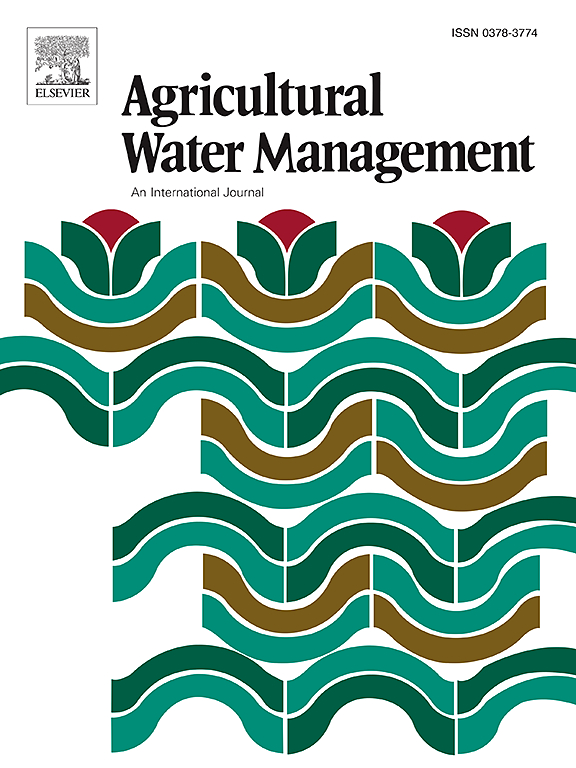Deficit irrigation enhances yield and water productivity of apples by inhibiting excessive vegetative growth and improving photosynthetic performance
IF 5.9
1区 农林科学
Q1 AGRONOMY
引用次数: 0
Abstract
Excessive irrigation in orchards can lead to wastage of water resources and instability or reduction in fruit yield. Therefore, this study aims to comprehensively explore the relationships among growth indicators, photosynthetic parameters, apple yield, and water productivity (WP) based on structural equation modeling (SEMD), and develop the appropriate irrigation management strategy for sustainable apple production. A two-year apple irrigation management experiment was carried out with 17 deficit drip irrigation (DDI) treatments, including a control treatment (CK, 100 % ETc) and 4 water deficit degree (W15 %, 85 % ETc; W30 %,70 % ETc; W45 %, 55 % ETc; W60 %, 40 % ETc) during four growth stages: bud burst to leafing stage (I), flowering to fruit set stage (II), fruit expansion stage (III), and fruit maturation stage (IV). Results indicated that transpiration rate (Tr) was more sensitive to water deficit than net photosynthesis rate (Pn), leading to greater instantaneous water use efficiency (WUEi). Compared to the CK, the W15 % DDI treatments at different growth stages slightly reduced Pn and significantly decreased Tr, thereby enhancing WUEi by 14.5 %-14.9 %. W15 % DDI treatments during the early growth stage restrained excessive growth while enhancing fruit development. SEMD analysis revealed that LAI had a significant positive effect on ET with a standardized path coefficient of 0.312 (P < 0.05) in 2021 and 0.498 (P < 0.001) in 2022, and fruit volume had a significant positive effect on ET with a standardized path coefficient of 1.03 (P < 0.001) in 2021 and 1.313 (P < 0.001) in 2022. The stomatal conductance (gs) was identified as the key factor influencing apple yield and WP using SEMD. The gs had an extremely significant positive effect on apple yield, with a standardized path coefficient of 0.356 in 2022 (P < 0.001). The indirect negative effect of leaf area index (LAI) on WP was mainly through its positive effect on water consumption (ET) and ET's subsequent negative effect on WP. Severe water deficits (W60 %) at stage III are inadvisable, as they may lead to apple yield losses exceeding 20 %. The I-W15 %, II-W15 %, II-W30 %, and IV-W15 % treatments synergistically improve both apple yield and WP, suggesting that these DDI treatments could be recommended for growers aiming to achieve sustainable apple production.
求助全文
约1分钟内获得全文
求助全文
来源期刊

Agricultural Water Management
农林科学-农艺学
CiteScore
12.10
自引率
14.90%
发文量
648
审稿时长
4.9 months
期刊介绍:
Agricultural Water Management publishes papers of international significance relating to the science, economics, and policy of agricultural water management. In all cases, manuscripts must address implications and provide insight regarding agricultural water management.
 求助内容:
求助内容: 应助结果提醒方式:
应助结果提醒方式:


